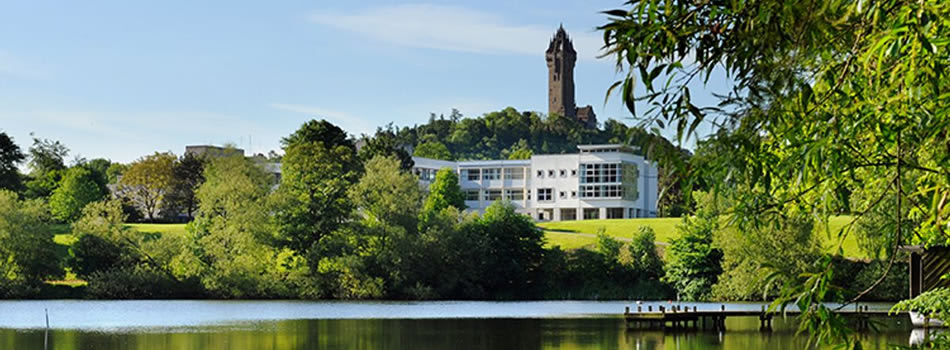Dr C Schroeder, Dr K Crocket
No more applications being accepted
Funded PhD Project (Students Worldwide)
About the Project
Understanding the biogeochemical cycle of iron, and how it interacts with the global carbon cycle, is of fundamental importance to better constraining its influence on atmospheric CO2 and ultimately on climate. Recent research has highlighted a gap in our understanding of riverine iron delivery, more specifically the nature of iron transport by dissolved organic carbon (DOC) in rivers emerging from peatland environments. There is growing recognition within marine biogeochemistry that the importance of iron inputs by rivers and/or groundwaters has been grossly underestimated. This situation arose because the global riverine iron input is based on the “average world river”. In turn, these calculations use average compositions and total water discharge to the ocean by major world rivers, most of which exhibit extensive iron removal by flocculation and sedimentation during seawater mixing. Humic-rich, high latitude rivers, which recent work has shown to have a much higher iron-carrying capacity, are underrepresented in these calculations. Therefore it is very likely that a much greater amount of dissolved iron can escape estuarine removal and be transported to the open ocean than previously thought. The nature of this iron-DOC transport from peatland environments requires further research to identify the exact mechanisms by which iron is transported from land to ocean, and to gauge the bioavailability of the DOC-packaged iron and hence its importance to marine photosynthesizing microorganisms in coastal and open ocean ecosystems.
This project will investigate how iron speciation and mineralogy in these organic carbon complexes influences (i) its solubility during transport across the estuarine salinity gradient, and (ii) its bioavailability in coastal waters. The student will employ novel, cutting-edge technologies (Mössbauer spectroscopy and combined ultrafiltration with SeaFAST+ICP-MS) to survey trace metal concentrations, with emphasis on iron concentrations, speciation and mineralogy, across the salinity gradients of three different sea lochs on the West Coast of Scotland (Etive, Sunart, Nevis). The differing geology and land use within each catchment, while remaining within a narrow geographical range, will reveal whether these factors result in distinct differences in iron speciation and mineralogy in the catchment runoff, and hence if there is a consequent influence on the bioavailability of the iron delivered to coastal waters.
The successful candidate will become a member of the ‘Environmental Systems, Change and Protection’ research team in the Biological and Environmental Sciences Department at the University of Stirling. Classical Mössbauer spectroscopy will be carried out at the MöSEE Laboratory in Stirling, while synchrotron-based Mössbauer spectroscopy will take place at the European Synchrotron Radiation Facility (ESRF) in Grenoble, France (proposal-based allocation of time). The field sampling and associated analytical work will require approximately one third of the student’s time to be spent at SAMS in Oban (http://www.sams.ac.uk/) and at the JHI in Aberdeen (http://www.hutton.ac.uk/). The student will become a member of the University of Stirling Graduate School (USGS; http://www.stir.ac.uk/research/stirling-graduate-school/) and will be enrolled in the Marine Alliance for Science and Technology for Scotland (MASTS) Graduate School (http://www.masts.ac.uk/graduate-school/).
Funding Notes
This PhD studentship is co-funded by the University of Stirling and the Marine Alliance for Science and Technology for Scotland (MASTS; http://www.masts.ac.uk). Funding will cover student stipend, at Research Councils UK published rates; university registration fees, at the ‘Home/EU rate’; and Graduate School fees. Students who do not meet the Home/EU eligibility criteria may be liable for ‘Overseas’ fee rates. The cost difference between Home/EU and Overseas fees is a matter between the candidate and the institution; and should be discussed during the application. The maximum duration of the PhD is 3.5 years.
References
Batchelli, S., Muller, F.L.L., Chang, K.-C., Lee, C.-L., 2010. Evidence for Strong but Dynamic Iron-Humic Colloidal Associations in Humic-Rich Coastal Waters. Environmental Science & Technology, 44(22): 8485-8490.
Krachler, R. et al., 2010. Relevance of peat-draining rivers for the riverine input of dissolved iron into the ocean. Science of the Total Environment, 408(11): 2402-2408.
Martin, J.H., 1990. Glacial-interglacial CO2 change: The iron hypothesis. Paleoceanography, 5(1): 1-13.
Moore, C.M. et al., 2013. Processes and patterns of oceanic nutrient limitation. Nature Geoscience, 6(9): 701-710.
Raiswell, R., Canfield, D.E., 2012. The Iron Biogeochemical Cycle Past and Present. Geochemical Perspectives, 1(1): 1-220.
How to Apply:
Please use the Stirling Post-Graduate Admissions web page (https://portal.stir.ac.uk/student/course-application/get-course-block.jsp?dept=&type=&course=&moa=&mos) to apply. Scroll down to “Natural Sciences - Biological and Environmental Sciences” choose "Research Degree in Environmental Science" and select “01-OCT-2015 Campus Based Full Time” from the drop down menu. It is important that you note in your application that you are applying for a PhD studentship with Dr Schroeder. If you have any queries about applying online please contact Post Grad Admissions. Additionally, please send your CV and covering letter (incl. e-mail addresses of 2 referees) to Dr Christian Schroeder (christian.schroeder@stir.ac.uk).
The entry qualification for postgraduate studentships is a First Class or Upper Second Class Honours degree and/or a Masters degree in a relevant subject. Your covering letter should clearly set out your suitability and motivation for this PhD with reference to your past experience and achievements. Application deadline is 30 June 2015, but submission of applications well ahead of this deadline is strongly encouraged!
Informal enquiries should be directed to Dr Christian Schröder (christian.schroeder@stir.ac.uk; +44 (0) 1786 46 7809) or Dr Kirsty Crocket (kirsty.crocket@sams.ac.uk; +44 (0) 1631 559 407).

 Continue with Facebook
Continue with Facebook


